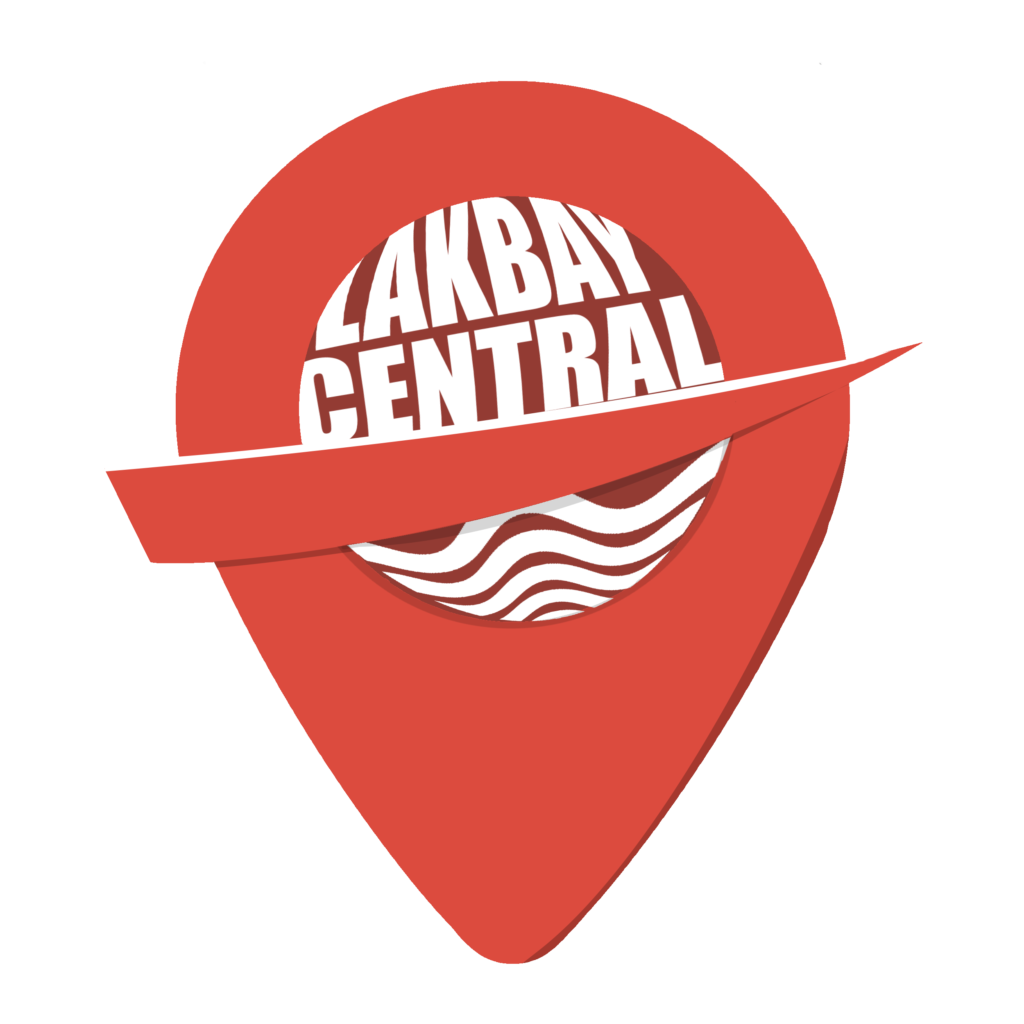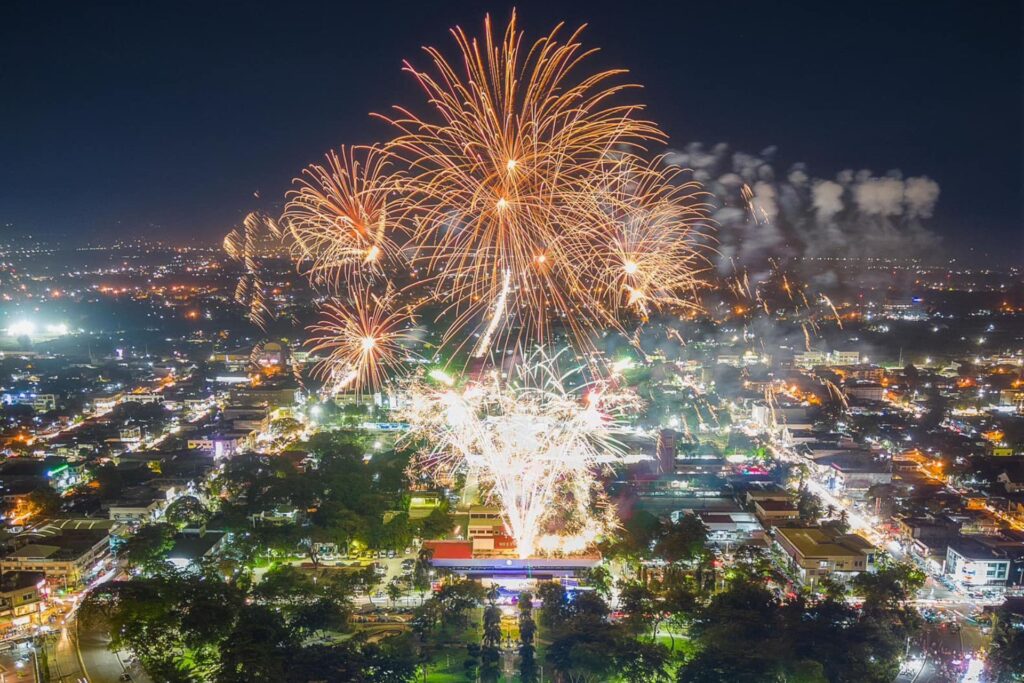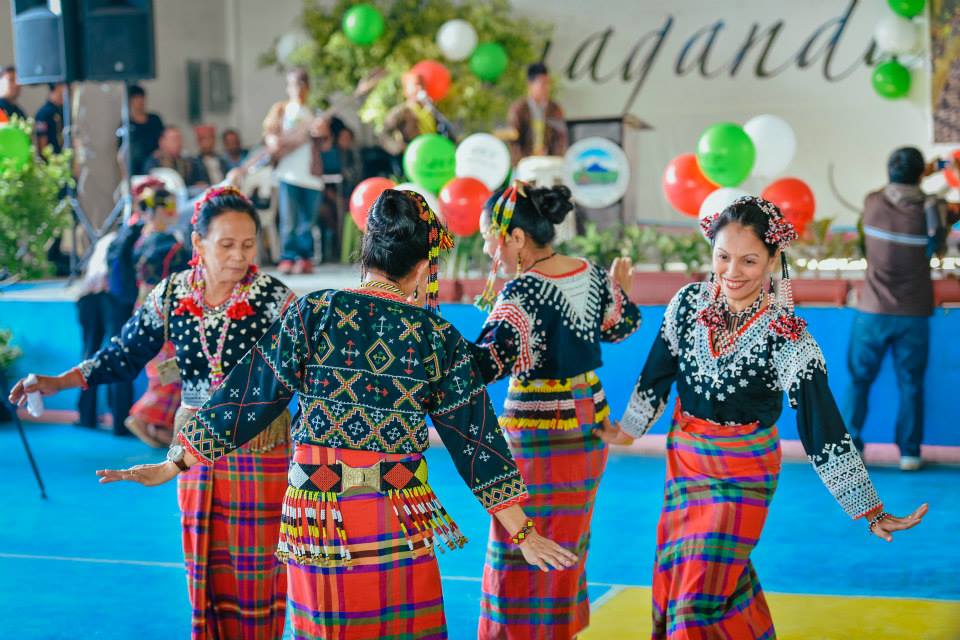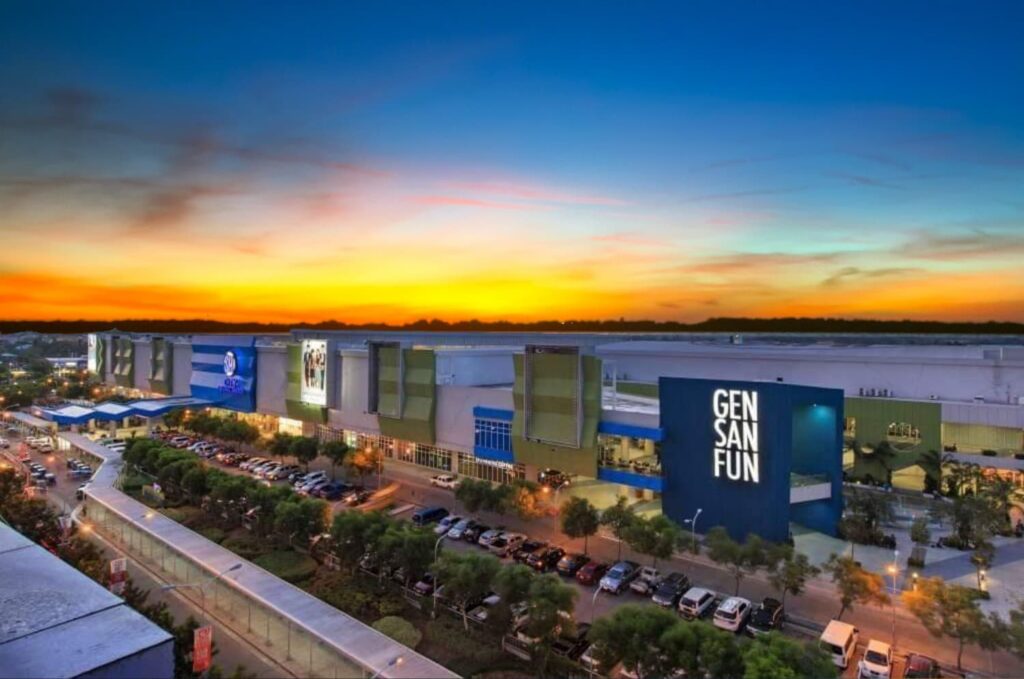
GenSan Tourist Guide: Explore the Best of the City

Are you planning to visit General Santos in the coming days or months?
Cool!
Do you have little to no idea how to get here and what to do when you land?
We’ve got you covered. This guide will help you get the most out of GenSan when visiting as a tourist.
Geography & Location
So, you’re curious about where General Santos, often affectionately called “GenSan,” is located in the beautiful archipelago of the Philippines? Let’s dive right in!
Where is GenSan in the Philippines?
Nestled in the southern part of the Philippines, General Santos is a vibrant city waiting for you to explore.
If you’re tracing your finger on the Philippine map, locate the large island of Mindanao.

As you move towards its southern tip, you’ll come across the Sarangani Bay area. Right there, hugging the bay’s coastline is where GenSan proudly stands.
It’s like the city is giving a friendly wave to the Celebes Sea!
Regional Classification
Now, for some administrative info (don’t worry, I’ll keep it light!): General Santos is part of the SOCCSKSARGEN region, also known as Region XII.
This region is a melting pot of cultures, traditions, and, of course, delightful cuisines. So, while you’re in GenSan, you’re getting a taste of the city and a flavor of the entire region!
How far is GenSan to Davao City?
General Santos is conveniently located near Davao City, another significant hub in Mindanao. The distance between the two cities is approximately 148 kilometers.

By bus or car, the journey offers scenic views and typically takes around 3 to 4 hours, depending on traffic and the chosen mode of transportation.
By Road: From Davao City, one can take the Pan-Philippine Highway/AH26 and General Santos Drive to General Santos. The journey covers approximately 150 kilometers and typically takes 3 to 4 hours by car or bus. Travelers will be treated to scenic views of Mindanao’s countryside along the way.
Flight Duration
From Manila (Ninoy Aquino International Airport):
- By Air: Manila, as the capital city, offers numerous daily flights to General Santos. Travelers can choose from major airlines such as Philippine Airlines, Cebu Pacific, and AirAsia. Direct flights from Manila to GenSan typically last between 1 hour and 45 minutes to 2 hours.
From Cebu (Mactan-Cebu International Airport):
- By Air: Cebu, being a central hub in the Visayas, also has regular flights to General Santos. Airlines like Cebu Pacific and Philippine Airlines operate on this route. The flight duration is approximately 1 hour and 30 minutes to 1 hour and 45 minutes.
From Clark (Clark International Airport):
- By Air: Clark, located in Pampanga, provides another gateway from Luzon to General Santos. Major carriers like Philippine Airlines and Cebu Pacific service this route, with the flight taking around 1 hour and 50 minutes to 2 hours.
From Iloilo (Iloilo International Airport):
- By Air: Iloilo, in the heart of the Visayas, has flights to General Santos, primarily serviced by airlines like Cebu Pacific. The journey by air is usually around 1 hour and 20 minutes to 1 hour and 40 minutes.
From Boracay (Godofredo P. Ramos Airport):
- By Air: Travelers from Boracay can first take a short flight to Cebu or Manila and then catch a connecting flight to General Santos.
It’s worth noting that flight durations can vary based on specific airline routes, wind conditions, and other factors. It’s always a good idea to check with the chosen airline for the most accurate timings.
Is GenSan Safe?
General Santos is a beacon of safety and hospitality in the southern Philippines.
The city has undergone significant transformations and has put in place measures to ensure the safety of both its residents and visitors.

Image Source: Office of the City Mayor
Foreigner-Friendly Atmosphere: It’s common to spot foreigners enjoying the city’s vibrant nightlife or taking an early morning jog. This is a testament to the city’s welcoming and secure environment.
Strategic Checkpoints: To further enhance safety, several checkpoints have been established at key entrances to GenSan. Notable ones include Lagao, Tambler, and Apopong. These checkpoints are manned by security personnel who ensure a smooth and safe traffic flow in and out of the city.
Stay Informed and Respect Local Norms: While GenSan is safe, staying updated on local news and respecting local customs and traditions is always a good practice.
Engage with Locals: The people of GenSan are friendly and helpful. Engaging with them can provide valuable insights and recommendations for your stay.
Local Cuisine Highlights
Ah, the culinary delights of General Santos! If there’s one thing that’s as vibrant as the city’s culture, it’s definitely its food. Let’s dive into the mouthwatering world of GenSan’s local cuisine.
Understanding GenSan’s Culinary Landscape:
General Santos, being a coastal city and the “Tuna Capital of the Philippines,” naturally has a culinary scene that’s deeply influenced by its maritime heritage. However, its position in Mindanao also means it enjoys a blend of indigenous, Moro, and other local influences, creating a rich tapestry of flavors and dishes.

Tuna Specialties:
- Tuna Sashimi and Kinilaw: Fresh slices of tuna served raw, either as sashimi with a side of soy sauce and wasabi or as kinilaw, marinated in vinegar, citrus, and spices.
Grilled Tuna (Panga and Buntot): These are the grilled jaw and tail of the tuna, respectively. They’re marinated and grilled to perfection, offering a smoky flavor that’s hard to resist.
Pastil: A local delicacy, pastil consists of steamed rice topped with savory, shredded chicken or fish, all wrapped up in a banana leaf. It’s a simple yet flavorful dish often enjoyed as a quick snack or meal.

Image source: Maggi PH
Local Stews and Soups: Given its coastal location, GenSan offers a variety of seafood-based stews and soups, often cooked with local vegetables and flavored with indigenous spices and condiments.
A Gentle Reminder:
The list above showcases just a few of GenSan’s culinary delights. If you want to explore a more detailed list of what to eat in the city, check out one of our resources for a comprehensive guide.
Tourism & Attractions
Here are a few categories to whet your wanderlust appetite. General Santos boasts a rich tapestry of natural wonders, from pristine beaches to majestic mountain trails.

Images Source: Travelling James
Immerse yourself in the vibrant local culture through festivals and culinary delights. Here’s an categorical overview of what to expect.
Natural Attractions:
- Beaches and Islands (e.g., Sarangani Island)
- Mountains and Hiking Trails (e.g., Sanchez Peak, Balakayo Mountains)
- Waterfalls (e.g., Brigada Waterfalls)
- Parks and Nature Reserves (e.g., Kalaja Karst Eco–Tourism Park)
Recreational Activities:
- Adventure Sports (e.g., hiking, diving)
- Boxing Training (e.g., Pacman Wildcard Gym)
- Eco-tourism Activities
Urban Attractions:
- Parks and Green Spaces (e.g., Leyson Park, Queen Tuna Park)
- Shopping and Markets
- Dining and Culinary Experiences (especially seafood and local delicacies)
Maritime Attractions:
- Fish Port Complex (e.g., General Santos Fish Port Complex)
- Bay Areas and Coastal Views
Events and Festivals:
- Tuna Festival
- Kalilangan Festival
- GenSan Summer Youth Fest
- Paskuhan Sa GenSan
- Local Cultural Celebrations
Entertainment and Nightlife:
- Bars, Clubs, and Entertainment Venues
- Live Performances and Shows
- Casino
What is the language and culture in GenSan like?
In General Santos, the tapestry of languages spoken paints a vivid picture of its rich cultural diversity. The primary language is Cebuano, often referred to as Bisaya. Serving as the lingua franca for the majority in the city and the broader region, Cebuano is deeply rooted in the daily lives and interactions of the locals.

Image source: RMN GenSan
Tagalog, the national language of the Philippines, holds its ground firmly in GenSan. Its widespread understanding and usage, bolstered by its prominence in media, education, and official communications, make it a unifying thread across the archipelago.
With its global resonance, English finds its place in the city’s business and tourism sectors. Its prevalence ensures that international visitors can easily navigate and communicate, bridging any potential language barriers.
But the linguistic landscape of GenSan doesn’t stop there. A myriad of other dialects enriches its cultural fabric. Ilocano, spoken by those with roots in the northern Philippines, can be heard in pockets of the city.
Ilonggo, hailing from the Visayas region, adds melodic tones to the mix. Indigenous communities, such as the Blaan, have distinct languages that echo their unique traditions and heritage. Maranao, spoken by the Maranao people of the Lanao provinces, further underscores the city’s inclusivity and diversity.
The multitude of languages and dialects spoken in General Santos is a testament to its position as a melting pot of cultures. Each language, from the most widely spoken to the niche dialects, tells a story of migration, integration, and coexistence in this vibrant city of Mindanao.
Shopping & Commerce in GenSan
General Santos offers a blend of modern shopping experiences and traditional markets, ensuring that every visitor finds something that suits their shopping preferences.

Image Source: SM GenSan FB
Modern Malls:
GenSan is home to several modern malls that house a mix of international and local brands. These malls offer a comprehensive shopping experience, from fashion and electronics to home goods and more.
Fashion & Apparel: Top brands, both international and local, offering a range of clothing, footwear, and accessories.
Electronics & Gadgets: Stores that cater to the latest tech needs, from smartphones to home appliances.
Entertainment: Cinemas showcasing the latest movies, gaming zones, and activity centers.
Dining: Many food choices, from fast food to fine dining, include local delicacies and international cuisines.
Local Markets:
GenSan’s traditional markets are a must-visit for those looking to dive deeper into the local culture. These markets offer fresh produce, local crafts, and a chance to experience the city’s bustling commerce up close.
Fresh Produce: Stalls brimming with fresh fruits, vegetables, and, notably, seafood, especially tuna.
Handicrafts & Souvenirs: Local artisans showcase their crafts, perfect for those looking for unique souvenirs.
Street Food: A chance to taste local snacks and delicacies, offering a culinary adventure for the taste buds.
Specialty Stores & Boutiques:
Expectation: Scattered around the city are specialty stores and boutiques that offer curated selections, from artisanal products to niche fashion.
Categorical Overview:
Local Crafts: Stores dedicated to products made by local craftsmen, from woven goods to handmade jewelry.
Boutique Fashion: Unique fashion finds that might not be available in larger malls.
Art & Decor: Shops that showcase the artistic talents of GenSan’s residents, perfect for those looking to add a touch of the city to their homes.

Image source: Asya Design
Accommodation Recommendations in GenSan
Check our Highly Recommended Hotels if you want to have a more detailed recommendation.
Luxury Hotels:
GenSan boasts hotels offering top-notch amenities for those seeking a touch of luxury, from spacious suites to gourmet dining and spa services.
Rooms & Suites: Well-appointed spaces with modern amenities offering city or sea views.
Dining: In-house restaurants serve a mix of local and international cuisines, often with specialty seafood dishes.
Facilities: Fitness centers, swimming pools, spas, and business centers for a comprehensive stay experience.
Mid-Range Hotels:
These hotels strike a balance between comfort and affordability. They offer essential amenities and services, ensuring a pleasant stay without breaking the bank.
Comfortable Rooms: Clean and cozy rooms equipped with basic amenities.
Dining Options: On-site restaurants or cafes offering a variety of meals.
Convenience: Often located near shopping centers, tourist attractions, or transportation hubs.
Budget Accommodations:
These accommodations are ideal for backpackers or those traveling on a tight budget and offer wallet-friendly basic facilities.
Shared or Private Rooms: Options ranging from dormitory-style rooms to private ones.
Common Areas: Shared lounges or kitchens where guests can socialize or prepare meals.
Location: Often in bustling areas, providing easy access to local attractions and transportation.
Tips for Booking and Ensuring a Comfortable Stay:
Research in Advance: Start looking for accommodations well before your travel dates. This ensures a broader choice and often better deals.
Read Reviews: Platforms like TripAdvisor or Booking.com offer guest reviews, providing insights into the actual guest experience at the hotel or accommodation.
Location Matters: Depending on your itinerary, choose a place that’s centrally located or close to the attractions you wish to visit. This can save time and transportation costs.
Ask About Amenities: If you have specific needs, like Wi-Fi, airport transfers, or dietary preferences, it’s a good idea to inquire in advance.
Safety First: For solo travelers or those with families, ensure the accommodation is in a safe neighborhood with security measures.
Public Jeepneys:
- Overview: Jeepneys are the Philippines’ iconic mode of public transportation, and GenSan is no exception. These colorful, elongated jeeps traverse specific routes within the city and are an affordable way to get around.
- What to Expect: Routes are usually painted or displayed on the side of the jeepney. Fares are relatively cheap, and passengers pay the driver directly, often passing the fare from one passenger to another until it reaches the driver.
Tricycles:
- Overview: Tricycles are three-wheeled vehicles commonly used for shorter distances or routes not typically serviced by jeepneys.
- What to Expect: Tricycles can accommodate up to 6 passengers. However, tourists should be aware that it’s a compact vehicle, and space can be tight. It’s customary to negotiate the fare before starting the journey. Be cautious, as there have been instances where drivers charge tourists excessively compared to the standard fare.
Taxis and Ride-Hailing Services:
- Overview: While taxis are available, the rise of ride-hailing apps like Grab has provided an alternative for those seeking a more private and convenient mode of transportation.
- What to Expect: Taxis run on meters, but it’s always a good idea to ensure the driver uses it. For ride-hailing services, fares are predetermined in the app, and you can choose between various vehicle options.
Buses and Vans:
- Overview: For intercity travel or trips to nearby towns and attractions, buses and vans are the primary modes of transportation.
- What to Expect: Buses usually have a fixed schedule and operate from bus terminals. Vans, often called “v-hires” (vans for hire), might offer a faster journey and can sometimes be chartered for private trips.
Motorbikes and Habal-Habal:
- Overview: For those seeking a quick and direct mode of transport, motorbikes are available for rent. Additionally, in some areas, significantly less accessible ones, “habal-habal” (motorbike taxis) are used.
- What to Expect: Habal-habal can accommodate more than two passengers, often with makeshift extensions to seat more people. Negotiating the fare beforehand and ensuring safety by wearing helmets is essential.
Car Rentals:
- Overview: Several car rental services are available in GenSan for those wanting more freedom and flexibility in their travel.
- What to Expect: You can rent a car with or without a driver. Ensure you have the necessary documentation, and it’s advisable to familiarize yourself with local traffic rules.
What is the climate in GenSan like?
General Santos, like much of the Philippines, experiences a tropical climate. This means the city generally has warm temperatures throughout the year, punctuated by distinct wet and dry seasons.
Dry Season (December to May): These months are characterized by lower rainfall and sunnier days. Temperatures can get quite warm, especially from March to May, considered the hottest months.
Wet Season (June to November): This period sees increased rainfall, with occasional heavy downpours and thunderstorms. The months of July to September typically receive the most rain.
Average Temperatures: GenSan’s temperatures usually range between 24°C (75°F) during the cooler early mornings to 34°C (93°F) during the hottest afternoons.
Preparing for the Weather During Your Visit:
Packing for the Dry Season:
- Lightweight and breathable clothing is ideal.
- Sun protection, including hats, sunglasses, and sunscreen, is essential.
- Stay hydrated; carry a reusable water bottle.
- Comfortable footwear, preferably sandals or open shoes, will keep you cool.
Packing for the Wet Season:
- Waterproof gear, such as raincoats or umbrellas, is a must.
- Quick-drying clothing can be beneficial.
- Waterproof bags or pouches to protect electronics and important documents.
- Footwear that can handle wet conditions, like water-resistant sandals or shoes.
General Tips:
- Regardless of the season, checking short-term weather forecasts closer to your travel dates is always a good idea.
- Have a backup indoor plan for outdoor activities, especially during the wet season.
- Stay informed about any weather advisories, especially if traveling during the peak of the wet season.